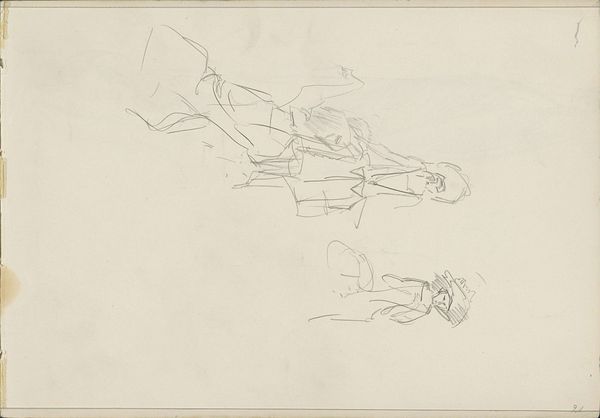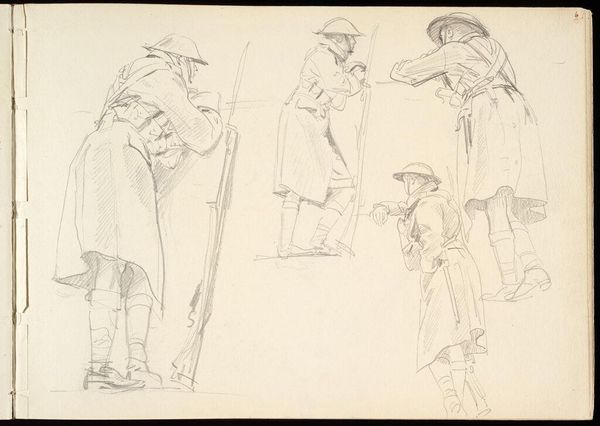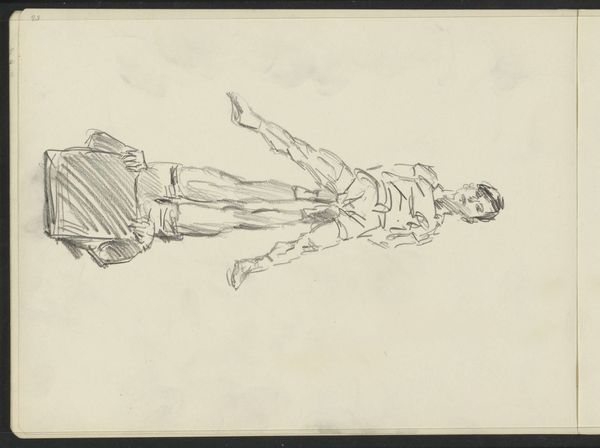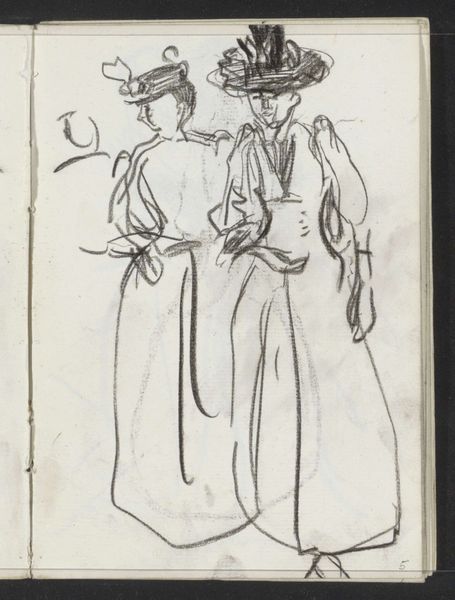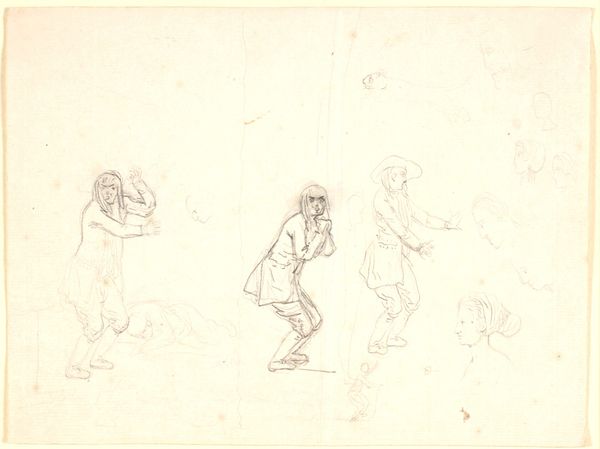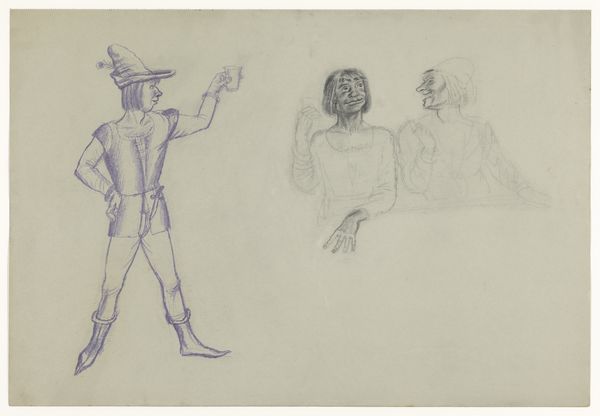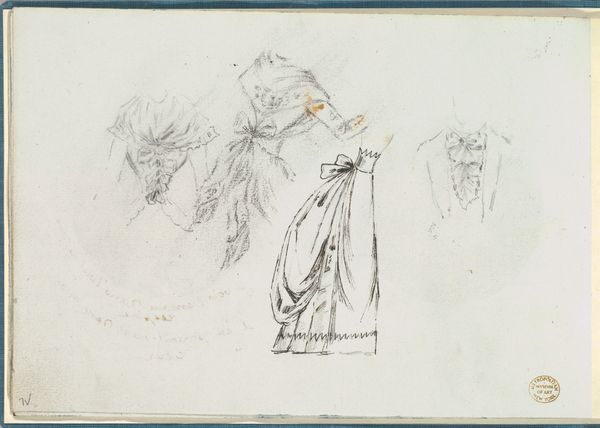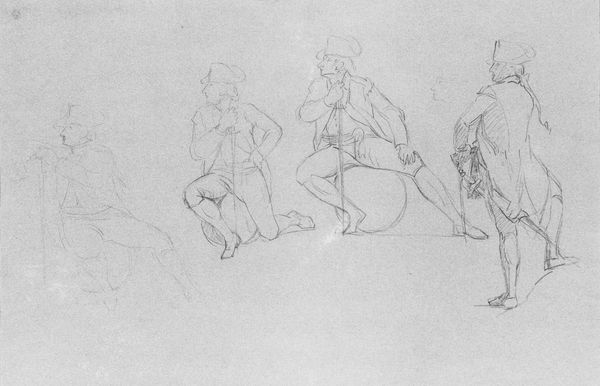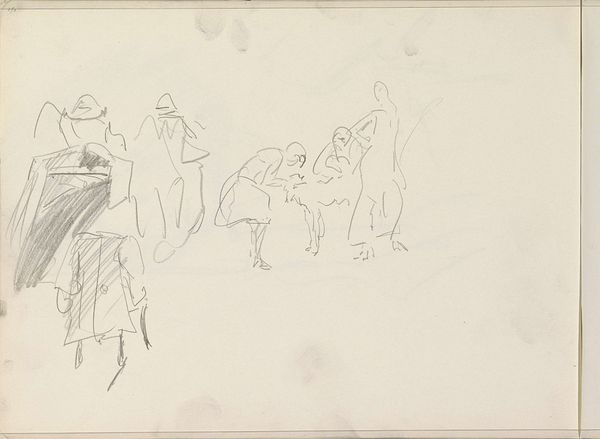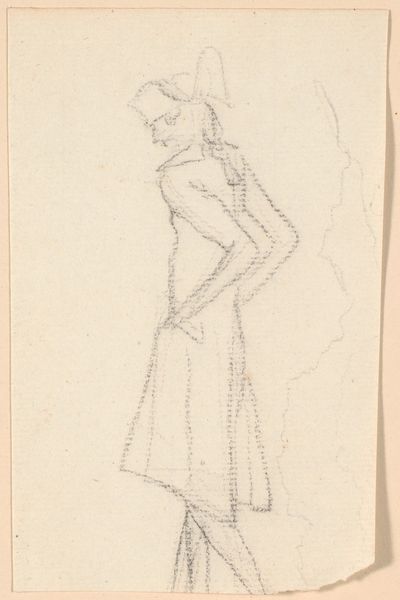
Optrin mellem to figurer. Til venstre en siddende kvinde med blottet overkrop, til højre en gående mand med bue og pilekogger 1743 - 1809
0:00
0:00
drawing, pencil
#
drawing
#
neoclacissism
#
landscape
#
figuration
#
pencil
#
academic-art
Dimensions: 137 mm (height) x 212 mm (width) (bladmaal)
Curator: What an intriguing, understated piece. This is a pencil drawing by Nicolai Abildgaard, made sometime between 1743 and 1809. It's titled, in Danish, "Optrin mellem to figurer. Til venstre en siddende kvinde med blottet overkrop, til højre en gående mand med bue og pilekogger," or, in English, "Scene between two figures. To the left, a seated woman with bare torso, to the right, a walking man with bow and quiver." Editor: The initial impression is one of tentative drama. It's a very sparse rendering, almost ghostly, especially the figure of the woman. It suggests a moment of conflict or maybe pleading. Curator: It resonates with the Neoclassical sensibilities of the time, doesn't it? The composition echoes classical friezes; that restrained aesthetic reflects a broader movement towards perceived purity of ancient Greek and Roman art and ideals. Notice the classical drapery. Abildgaard’s involvement in academic art certainly influenced his rendering of the figure. Editor: I'm particularly drawn to the contrast between the female figure, almost erased in her ethereal rendering, and the somewhat sturdier male figure. The bow and quiver, the suggestion of weaponry, it’s interesting how the artist is clearly making visual arguments about who is wielding the symbolic power. Curator: Exactly! Think about how this connects to broader social themes of the period, like shifting power dynamics, expectations about gender roles, and emerging social narratives around liberty and enlightenment. This image feels charged because, at the time, many saw echoes of their own societal challenges in these mythological tableaus. Editor: And Abildgaard uses classic symbols to frame a timeless tension. The vulnerable woman versus the armed man, the bare body versus clothed. It speaks to a fundamental imbalance of power. His attention to clothing and equipment versus nakedness reveals a commentary, but the specific meaning requires deciphering. Curator: Yes. In essence, it encapsulates a societal moment, bridging mythological narratives with contemporary discourse, where every deliberate stroke echoes deeper ideological undercurrents. It invites continuous decoding, even now. Editor: Indeed. It’s amazing how a seemingly simple drawing can hold so many layers of social commentary. It keeps us thinking about how the echoes of classical myths resonate in contemporary life, echoing, still.
Comments
No comments
Be the first to comment and join the conversation on the ultimate creative platform.
